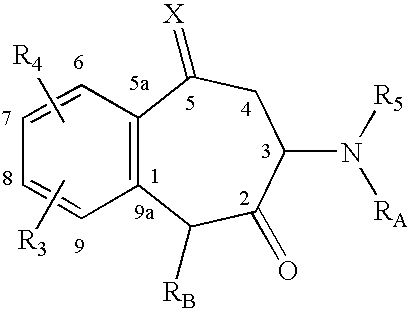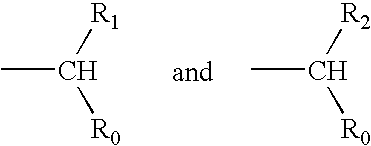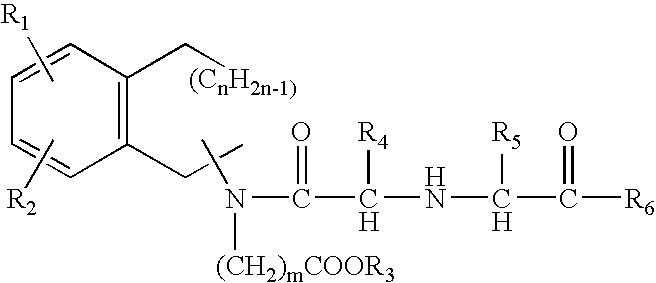Conjoint administration of morphogens and ACE inhibitors in treatment of chronic renal failure
- Summary
- Abstract
- Description
- Claims
- Application Information
AI Technical Summary
Benefits of technology
Problems solved by technology
Method used
Image
Examples
example 1
Nephrectomy Chronic Renal Failure Injury Model
[0598] A rat partial (5 / 6) nephrectomy or rat remnant kidney model (RRKM) model was employed essentially as described (Vukicevic, et al. (1987) J. Bone Mineral Res. 2: 533, the entire content of which is incorporated herein by reference). Male Munich-Wistar rats (2-3 months old, weighing about 200-250 g) were subjected to renal mass ablation. Specifically, the right kidney is excised in conjunction with selective ligation of the left renal artery branches such that one third of the kidney remains perfused (5 / 6 NPX, see FIG. 12). Immediately following surgery, plasma creatinine and BUN levels rise dramatically due to the loss of renal mass and function. Over the next several weeks of this “acute” failure phase, plasma creatinine and BUN levels of surviving animals decline somewhat toward normal values but remain elevated. Renal function then appears to remain relatively constant or stable for a period of variable duration. After this poi...
example 2
Unilateral Ureteral Obstruction (UUO) Renal Fibrosis Model
[0602] This UUO model was employed essentially as described (Moller, et al. (1984) Virchows Arch 402: 209-237, the entire contents of which are incorporated herein by reference). Sprague-Dawley rats (about 250 g) underwent either a sham operation (ureter manipulated but not ligated) or unilateral ureteral ligation. Two ligatures, 5 mm apart, were placed in the upper two-thirds of the ureter over a section of polyethylene tubing placed around the ureter (see FIG. 17). The suture tied to obstruct the ureter was removed along with the tubing at day 5, relieving the obstruction. In this model, hypertension, proteinuria, and lipid dysregulation do not contribute to progressive nephron destruction, and glomerular injury is not prominent early in the course of the injury produced. Uremia is avoided by the function of the contralateral kidney, which undergoes hypertrophy and hyperplasia as the obstructed kidney is destroyed. The ren...
example 3
Streptozotocin-Induced Diabetic Nephropathy Model
[0605] Nephropathy is one of the most common and most serious complications in type 1 diabetes mellitus. Renal involvement usually starts with renal hypertrophy and glomerular hyperfiltration, which can be observed soon after diabetes onset (Mogensen, et al. (1994) Diabetes Care 17:770-775). Glomerular hyperfiltration is often accompanied by a loss of renal functional reserve. After some years, microalbuminuria (30 to 300 mg / day) may occur as well as morphological changes such as thickening of the glomerular basement membrane and mesangial expansion. The albumin leakage may subsequently become aggravated and overt nephropathy with albuminuria (>300 mg / day) may develop, usually 10 to 20 years after the onset of diabetes. At this time, hypertension becomes more common. Nephrotic syndrome may occur, and glomerular filtration rate declines. The most important therapeutic measures undertaken to avoid, or retard, the progress of nephropath...
PUM
| Property | Measurement | Unit |
|---|---|---|
| Weight | aaaaa | aaaaa |
| Weight | aaaaa | aaaaa |
| Fraction | aaaaa | aaaaa |
Abstract
Description
Claims
Application Information
 Login to View More
Login to View More - R&D
- Intellectual Property
- Life Sciences
- Materials
- Tech Scout
- Unparalleled Data Quality
- Higher Quality Content
- 60% Fewer Hallucinations
Browse by: Latest US Patents, China's latest patents, Technical Efficacy Thesaurus, Application Domain, Technology Topic, Popular Technical Reports.
© 2025 PatSnap. All rights reserved.Legal|Privacy policy|Modern Slavery Act Transparency Statement|Sitemap|About US| Contact US: help@patsnap.com



